For many of us, dealing with pain is a common occurrence. Momentary pain related to slamming your finger in the door or stubbing a toe isn’t a big deal and is easily forgotten. However many people deal with constant pain on a daily basis for months, years, even decades. According to a recent Institute of Medicine Report: Relieving Pain in America: A Blueprint for Transforming Prevention, Care, Education, and Research, “pain is a significant public health problem that costs society at least $560-$635 billion annually, an amount equal to about $2,000.00 for everyone living in the U.S.”
This epidemic raises many questions to the inquisitive therapist: why are so many people dealing with chronic pain, are the interventions being utilized effective, what is missing from the treatment paradigm that allows this phenomena not only to persist but grow on an annual basis.
In order to properly address pain we must first come to an understanding of what is happening physiologically. Only once we have clarity on these mechanisms can we then begin to formulate effective treatment strategies that are appropriate to each individual. Any attempt to intervene without a foundational knowledge of this life saving sensation equates to guessing at best, and at the worst causing our clients further distress.
What is Pain:
Dr. Lorimer Mosely, world renowned pain researcher, says there is no such thing as pain nerves but rather danger nerves, and what we think of as pain is based entirely on our brains interpretation of what the signal means1. Pain is therefor a learned experience based upon each person’s individual background, upbringing, and lifestyle choices. What is experienced as pain to one person can be experienced as pleasure to the next.
Pain takes many forms ranging from dull and achy, sharp, burning, electric, etc. The qualitative nature of these pain descriptions can be helpful to the therapist in attempting to determine the source of the signal (something we will explore later). Regardless of the form it takes, these signals serve the single purpose of informing the individual of something happening to the body. Unfortunately, most of us decide to ignore the small signals and wait to act until the sensations become so severe they interfere with our daily routines.
What does this mean to the massage therapist:
Pain is essential for survival. Those born without the ability to sense painful stimuli, a term defined as congenital analgesia, live shorter lives. Helping a client understand that, even though the pain sometimes feels unbearable, the body is attempting to prevent something worse from occurring.
The first step I take when dealing with a client that has, or is experiencing, chronic pain is to explain to them this basic concept of individual interpretation. Many times a clients pain has become more intense and more frequent without any change to the initiating dysfunction. This can be due to a wide variety of reasons with a common one being fear and stress around what they are going through. This elevation of sensation can immediately begin to be resolved by helping them to overcome their fear of the pain – educate and inform2. For those with low back spasm I help them to understand the 2-5 days of a locked up back is much less of a long term issue compared to damage of the spinal cord.
Caution is warranted:
There are a wide variety of reasons why someones pain is unresolved or amplifying and it’s foolish to assume it’s a simple as what has been stated thus far. A myriad of factors are involved ranging from hormonal shifts, changes in cellular structure, neurological miscommunication etc. We will explore more of these concepts in later articles. This purely serves as an introductory jumping off point, hopefully providing a new tool to begin helping our clients live healthy pain free lives.
- Butler, D., Moseley, L. (2013). Explain Pain(2nd Edition). Adelade City West: Noigroup Publications
- Chaitow, L, (2003). Focus on Pain 2003 Conference Report. Journal of Bodywork and Movement Therapies, 7(3), 132-135. doi 1016/S1360-8592(03)00041-X

0 Comments